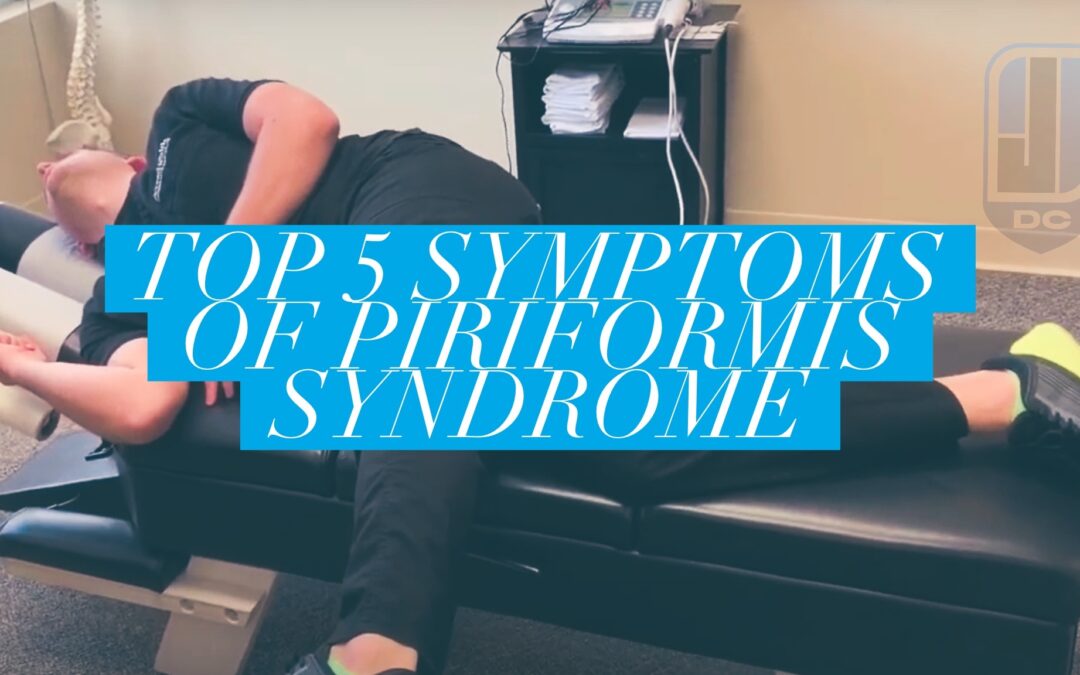Knowing the top 5 symptoms of piriformis syndrome is an important first step to figuring out if you have piriformis syndrome or not. It can be a difficult condition to diagnose because piriformis syndrome presents differently from person to person. Leg pain caused by this condition can mimic other conditions such as sciatica from a lumbar disc problem. Hip pain can mimic hip osteoarthritis or greater trochanteric pain syndrome.
Keep in mind that there are many symptoms caused by piriformis syndrome, and you may have symptoms that aren’t in this list. That’s why it’s always a smart decision you find a rehab-focused chiropractor who can diagnose and treat your condition appropriately. You can find me here, where I practice at Sentara Therapy Center – Dumfries as a chiropractor in Dumfries, VA.
If you’re looking for more information on piriformis syndrome, make sure you check out my some of my other posts here:
Chiropractic Treatment for Piriformis Syndrome
How to Release the Sciatic Nerve in Piriformis Syndrome
Here are the top 5 symptoms of piriformis syndrome based on available research and my clinical experience:
1. Pain or Discomfort in the Gluteal Region
The most common symptom of piriformis syndrome is pain, paresthesia (strange sensation), or numbness in the buttocks. The buttocks area is called the gluteal region because the gluteal muscles are located in this area.
Why does piriformis syndrome cause pain in the gluteal region? Well, underneath your gluteal muscles there are quite a few smaller muscles attaching to the hip and pelvis, and the piriformis is one of them. In the case of piriformis syndrome, it’s the main culprit of discomfort. Close to 100% of people with piriformis syndrome will have discomfort in the buttocks. If you don’t have pain over the gluteal region, you can poke around the area with your thumb and you’ll notice that it feels tight and/or tender.
2. Radiating Pain Down Your Leg
Radiating pain that travels from the gluteal region down the back of the leg towards the foot is a hallmark sign of piriformis syndrome. You may tolerate pain or tightness in your buttocks but when pain starts traveling inferiorly it will get your attention.
The piriformis muscle lays over top of the sciatica nerve, and in some, your sciatic nerve may actually travel through the piriformis muscle. When the piriformis muscle is inflamed, tight, or generally just irritated then it often involves the sciatic nerve. An irritated sciatic nerve from the piriformis muscle is what produces pain that travels from the buttocks down towards the foot.
3. Prolonged Sitting or Standing is Painful
Piriformis syndrome is often painful after 15-20 minutes of either standing or sitting, or both. Holding one position can be irritating while changing positions or moving often provides transient relief.
Sitting and standing for longer periods of time is difficult for many people with sciatica or low back pain as well. However, if these actions reproduce the characteristic gluteal pain with radiating discomfort then it certainly raises the suspicion for piriformis syndrome.
4. Internally Rotating Your Hip is Painful
Internally rotating your hip lengthens the piriformis muscle and stretches it over the sciatic nerve as well as stretching an irritated an/or inflamed muscle. Oftentimes, you may be externally rotating your hip, causing your toes to point outwards, without knowing. This is referred to as the “Pace Sign.” This position often relieves the discomfort because it gives slack to the piriformis muscle.
In addition to internally rotating the hip, hugging the knee towards your chest, and adducting (bringing the leg towards center towards the opposite leg) in combination usually produces the most discomfort in the buttocks area and down the leg in cases of piriformis syndrome.
5. Pain is Causing You to Walk Differently
Piriformis syndrome pain can cause you to walk differently while you’re trying to avoid painful movement. If you are “toeing out” or showing the previously mentioned “Pace Sign” then walking normally may be difficult for you. This is especially true in the cases of piriformis syndrome that are severe or have become chronic.
The longer the piriformis muscle and sciatic nerve are irritated, the more they start to affect your simple daily activities like walking, how you sit, how you stand, and more generally how you move. These changes can happen slowly over time, and are a way for your body to adapt while avoiding painful movements.
Other Symptoms of Piriformis Syndrome…
Remember, there are other symptoms of piriformis syndrome besides these five. I have to reiterate that every case is unique and trying to self diagnose what’s bothering you is difficult to do and not always a great idea. One thing I do want to point out is that here are symptoms that, when present, indicate something more than piriformis syndrome is going on and should make you seek urgent care.
Any loss of bowel or bladder retention or loss of control, tingling or numbness in the groin, and motor weakness are symptoms that require immediate attention. Run of the mill piriformis syndrome will not cause these. Fortunately these are rare, so you typically don’t need to worry too much about them.
If you have any questions about piriformis syndrome or other musculoskeletal conditions feel free to make a suggestion and I’ll do my best to write some content on them!

Jason Williams DC is a licensed Doctor of Chiropractic with Physical Therapy Modality and Acupuncture privileges. He is a chiropractor in Dumfries, VA at Sentara Therapy Center. Dr. Williams’ clinical expertise is in the evaluation, treatment, and rehabilitation of neuro-musculoskeletal conditions. Specific focuses include spinal, extremity, and sports-related complaints. He brings a patient-first attitude to his treatments and is a proponent of evidence-based and integrative care. See more content and his contact info here.
The opinions and views are mine personally, and do not necessarily reflect the views of others in the profession, my employer, or organizations that I belong to.

